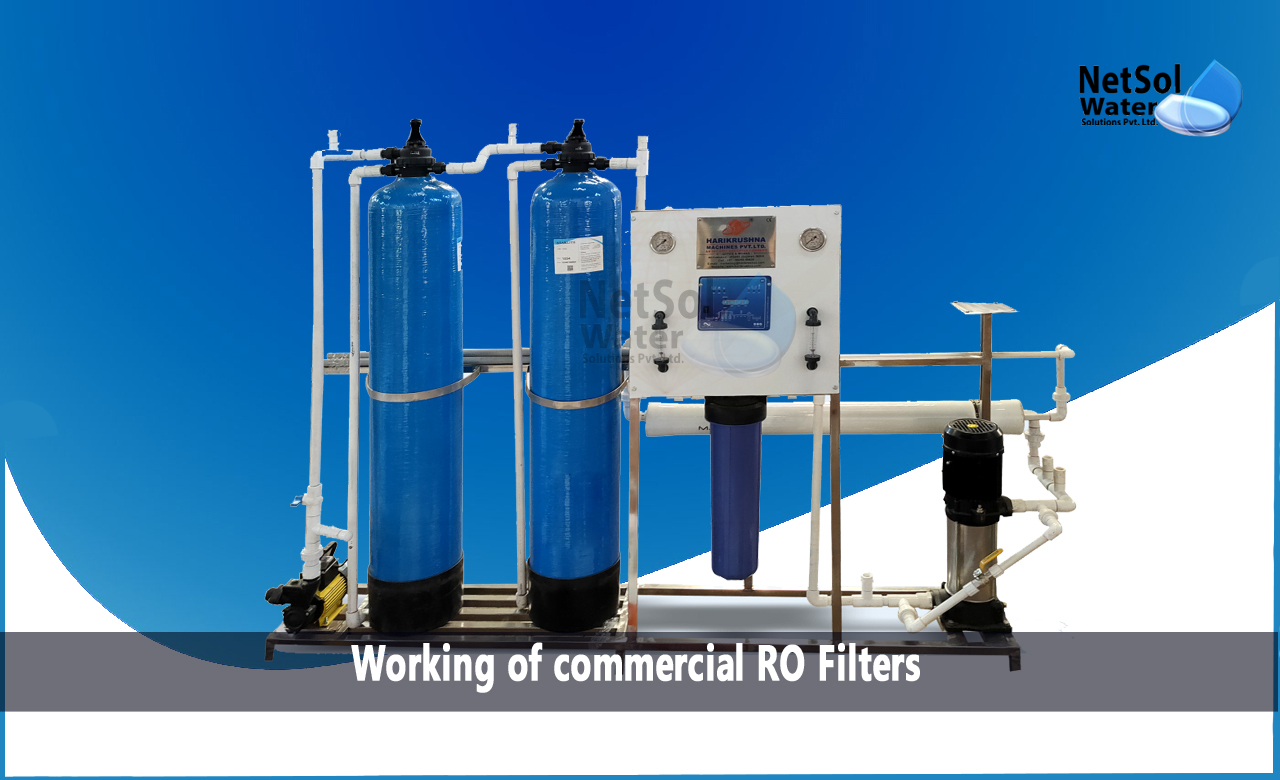Water is an essential element of life. However, it is becoming more and more polluted every day for organic, inorganic, and biological reasons. Consuming contaminated water can harm human health and cause typhoid, diarrhea, skin rashes, and other conditions. Using a RO water purifier is one of the most efficient ways to prevent such issues. Using a RO water purifier is without a doubt the best option, but many of us are unaware of how they operate.
So, in this blog, we go through in depth how a RO water purifier works step by step and how each process contributes to removing contaminants to give clean, safe drinking water.
What is reverse osmosis?
Reverse osmosis is a water filtration solution system that removes contaminants from a raw water source. It concentrates the pollutants present in the raw water by forcing pressurized water through a membrane.
Reverse osmosis is extremely successful for commercial applications, including the manufacture of pharmaceuticals, textiles, food manufacturing, hospitals, institutional sectors, automobile and chemical industries, etc. as it can reject 99.9% of microorganisms.
How does commercial RO filter work?
Commercial RO plants use micro-membrane technology, a sophisticated filter that removes even the smallest particles from water to make it clean and safe to drink. The filtering procedure entails a number of stages, each of which efficiently removes particles and contaminants like chemicals, toxic substances, and corrosives. The end result is water that is free of disease-causing germs and is safe to drink.
Working cycle:
Step 1: Water is delivered into the sand filter by the raw water pump, which filters out suspended particulates.
Step 2: After passing through the activated carbon filter, the water is dechlorinated.
Step 3: A micron cartridge filter is used to further filter the water.
Step 4: A high-pressure pump then pumps water into the RO membranes.
Step 5: Only pure water can flow through the membranes; the majority of dissolved solids cannot.
Step 6: The contaminated water then travels via the reject line or recycling line, while the pure water travels through the RO product line.
Stages in a Reverse Osmosis System
1. Sedimentation Pre-filter:
It eliminates silt, corrosion, and dirt particles as small as 5 microns. Cartridges for sediment come in a variety of designs.
· Pleated filters: Pleated filters have more surface area and last longer. These cartridges can be cleaned and used again.
· Polypropylene Filters: Filters made of polypropylene are used to filter out silt, rust, and other impurities from water. The most often used sizes for drinking water applications are 5 and 20 microns.
· string coiled filters: For your filtering needs, string coiled filters are a practical and affordable option. These cartridges are available in a variety of media types and are used for a variety of purposes.
2. Carbon Pre-filter:
With a typical 0.5 to 10 micron filtration capacity, activated carbon block filters are also useful for particulate filtration, eliminating chlorine's taste and odor, and reducing insoluble lead.
3. Reverse Osmosis Membrane:
95% of the total dissolved solids (TDS) are rejected (removed) by thin film composite (TFC) down to.0001 microns.
Membranes known as thin film composite membranes (TFC or TFM) are semi-permeable membranes primarily used in water filtration or desalination systems. Additionally, they are utilized in chemical applications including batteries and fuel cells.
4. Post Carbon Filter:
Normally, the membrane housing of a commercial reverse osmosis system is where inline post filters are attached. Any chlorine or pollutants that the other cartridges or membrane failed to catch are removed by the post filter.
Do you need an advice or assistance on selecting the best water and waste water treatment unit? We have solutions for all your problems!
Let us now your problem, our experts will make sure that it goes away.
For an assistance or related query,
Call on +91-965-060-8473
Or write us at enquiry@netsolwater.com



